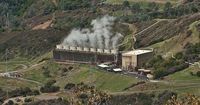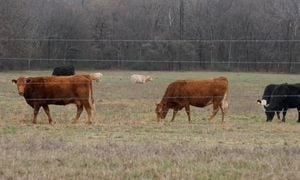For residents in Northern California’s wine country, a gentle rumble beneath their feet is nothing new. But over the past few days, the earth has been particularly restless near the Geysers geothermal steam field, a unique patch of ground straddling Sonoma and Lake counties. Since Thursday morning, an eye-opening 131 small earthquakes have been recorded in this region, according to the U.S. Geological Survey (USGS). The tremors have ranged from a barely noticeable magnitude 0.2 up to a more attention-grabbing 4.0, with the largest quake striking just before sunrise at 5:48 a.m. on August 14, 2025.
The epicenter of that largest jolt was pinpointed about 10 miles east of Cloverdale, 20 miles northwest of Calistoga, and 26 miles north of Santa Rosa—a remote but not unfamiliar spot for seismic activity. As reported by Los Angeles Times and SFGATE, the sequence of quakes has been described as a “swarming sequence,” a term that seismologists use when the activity doesn’t fit neatly into the standard categories of aftershocks or classic earthquake swarms. USGS seismologist Susan Hough told SFGATE, “Sometimes things blur together in terms of definitions. It doesn’t quite fit a category cleanly.”
What’s especially intriguing about this seismic flurry is its connection to the Geysers geothermal field. For decades, this area has been known as one of the world’s most productive geothermal power facilities. Since 1960, the Geysers have generated electricity for Sonoma, Mendocino, Lake, Marin, and Napa counties, drawing on the natural steam produced by the volcanic field below. But as productive as this clean energy source is, it comes with a side effect: it literally shakes the ground.
According to the USGS, “Activities associated with the withdrawal of steam for producing electric power cause or induce small quakes to occur in the field.” The science behind this is straightforward, even if the mechanics are somewhat hidden from daily life. Removing steam and heat from deep underground causes the surrounding rock to contract. That contraction, in turn, produces stress that can trigger earthquakes—albeit typically small ones. Adding another layer, reclaimed cold water from Santa Rosa and Lake County is pumped into the field to maintain steam production, and this interaction with hot rock “appears to be a significant factor in inducing the earthquakes,” the USGS notes.
Still, there’s a reason why most residents of nearby towns like Cobb and Middletown don’t bat an eye at these tremors. “Residents…are accustomed to feeling smaller tremors, and often don’t bother reporting them,” Hough said. For the largest recent quake, only 36 people submitted reports to the USGS’s “Did You Feel It?” survey. Of those, 16 described light shaking, 12 reported light-to-moderate shaking, and eight felt only weak shaking. The most responses came from Calistoga and Kelseyville, with seven reports each.
But just because the quakes are small doesn’t mean they’re ignored by scientists. The Geysers-Clear Lake area is one of California’s eight volcanic regions, and it’s closely monitored for both energy production and seismic hazards. While the state’s most infamous earthquake threats—like the San Andreas and Healdsburg-Rodgers Creek faults—are miles away, the Geysers region has its own unique seismic profile. USGS data shows that the recent quakes follow a northwest-oriented trend, but not along any currently mapped faults. This is important, because large, destructive quakes typically require a significant, continuous fault line.
Historically, the largest earthquake ever recorded in the Geysers area was about magnitude 4.5. “It is possible that a magnitude 5 could occur, but larger earthquakes are thought to be unlikely. In order for a larger earthquake to occur, it is necessary that a large fault exist,” the USGS explains. “At the Geysers, no such continuous fault is known to exist.” In other words, while a bigger shake isn’t impossible, the odds of a truly damaging event remain low—at least by California standards.
That said, the USGS does offer a note of caution. Hough pointed out that earthquake activity “always statistically increases the odds of more activity once you’re disturbing other faults.” So while the Geysers quakes aren’t currently linked to any major fault system, the mere fact of shaking the ground can make it more likely that other faults in the area might become active. “There’s definitely a chance that you’ll have other felt earthquakes in the area,” Hough added.
To understand why the Geysers are so seismically lively, it helps to look at the unique interplay of geology and human industry in the area. The geothermal field sits atop a volcanic system, but despite its evocative name, there are no actual geysers at the surface. Instead, the underground heat is harnessed by drilling wells and extracting steam, which spins turbines to produce electricity. Over time, as steam is withdrawn, cold water is injected to sustain pressure and production. This cycle of extraction and injection is what keeps the lights on in thousands of Northern California homes—but it also keeps the earth in motion.
For energy companies and local governments, the benefits of geothermal power are significant. It’s renewable, relatively clean, and provides a steady source of electricity that doesn’t depend on sunshine or wind. The Geysers have been a backbone of the region’s power grid for more than six decades. But for scientists, the area is also a living laboratory—a place to study how human activity interacts with the deep processes of the earth.
So, should residents be worried? The consensus among experts is that while the recent swarm is notable, it’s not cause for alarm. Most of the quakes have been so small that they barely register, let alone cause damage. And while the possibility of a magnitude 5 event can’t be ruled out, the absence of a major fault means the risk of a catastrophic quake is very low. Still, as Hough and others remind us, seismic activity is never entirely predictable. “Earthquake activity always statistically increases the odds of more activity,” Hough said—a reminder that in California, the ground is never truly still.
In the end, the Geysers’ recent shaking is a vivid illustration of the delicate balance between harnessing nature’s power and living with its quirks. As Northern California continues to rely on geothermal energy, the region’s residents—and scientists—will keep one ear to the ground, listening for the next small rumble beneath their feet.





